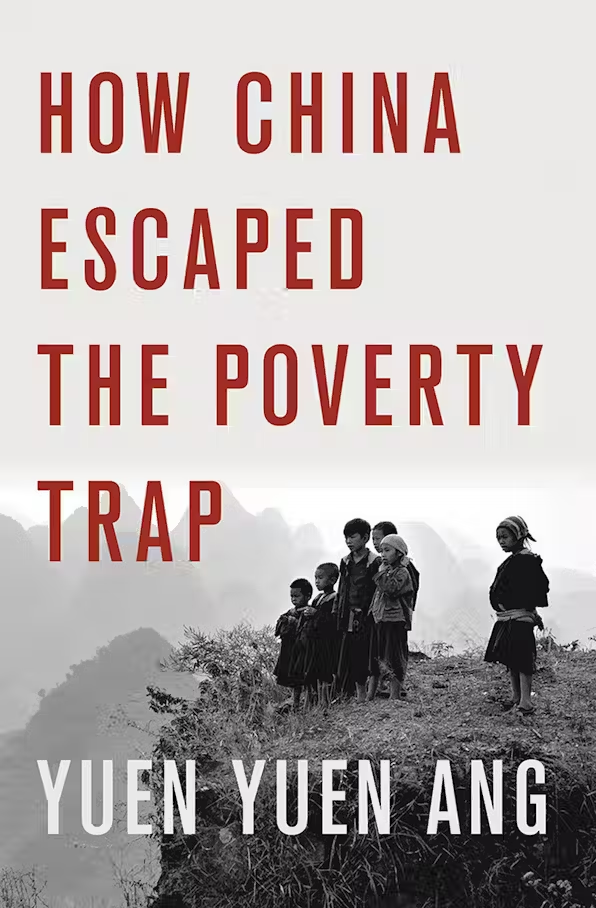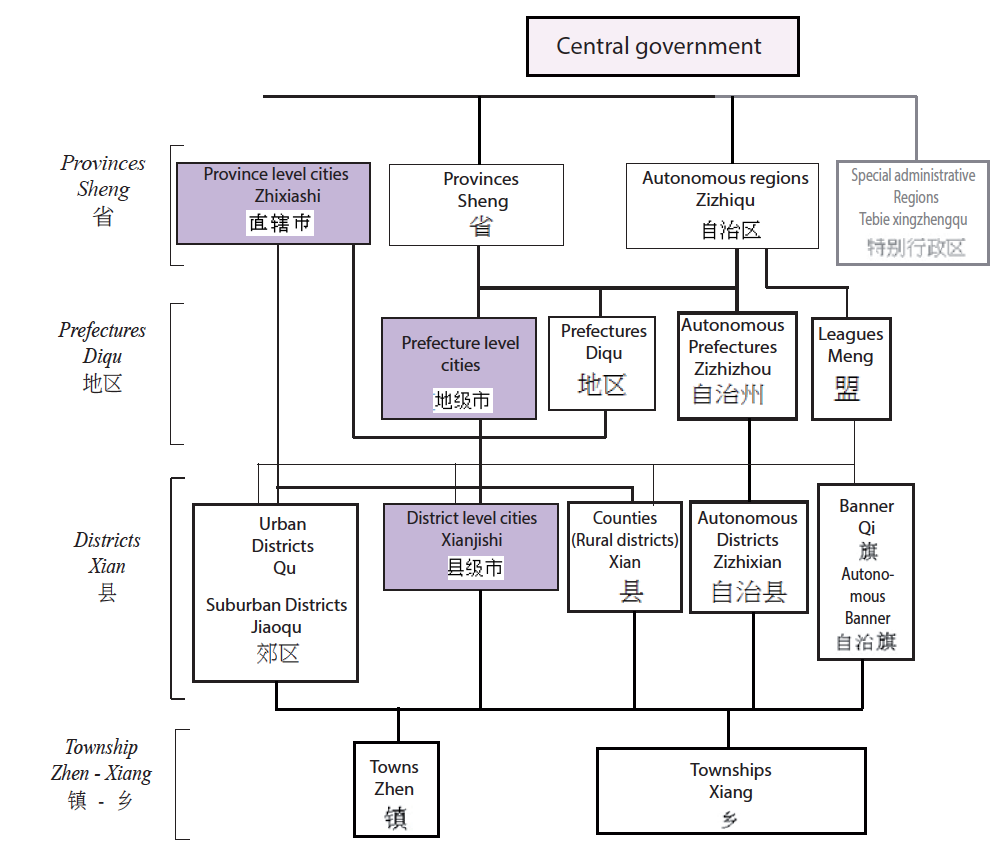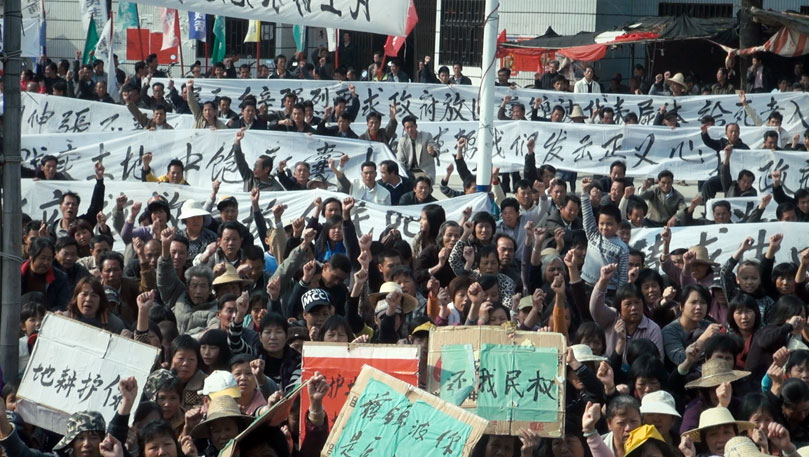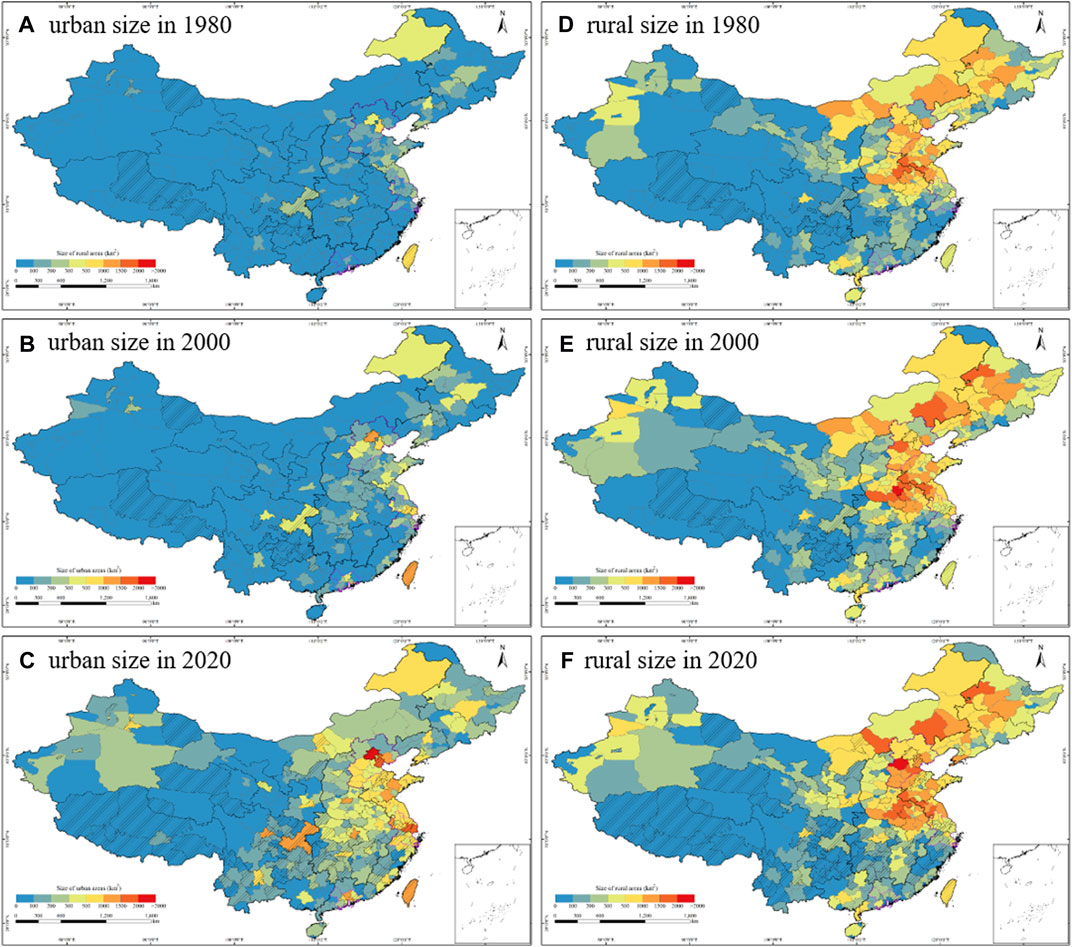Chinese Cities - Sciences Po - OGLM 3050 - 59127 - S2 2025 Clément Renaud [hi@clementrenaud.com](mailto:hi@clementrenaud.com) (use left/right keyboard arrows to navigate) --- class: inverse, center, middle ## Week 2 # 地 ## Land: Governance And Territorial Reforms #### 4 Feb 2025 --- class: inverse, center, middle ## Character of the week # 地 [Purple Culture](https://www.purpleculture.net/dictionary-details/?word=地) / [Hanziyuan](https://hanziyuan.net/) / [CUHK dic](https://humanum.arts.cuhk.edu.hk/Lexis/lexi-mf/search.php?word=地) --- class: inverse # Some practical matters - [Fiche de présence](https://scolarite.sciences-po.fr/PROD/twbkwbis.P_GenMenu?name=homepage) - Assignments - Any questions? --- class: inverse # What we will cover today - feedback course 1 - the Made in China assignment : methodology and objectives - land reform in China (since 1950s) - territorial governance and property development --- # Made in China assignment ### [https://clementrenaud.com/chinese-cities](https://clementrenaud.com/chinese-cities) - individual - due week 6 - read the [assignement](/chinese-cities/assignement-made-in-china) - _NB: I'll be away during the next two weeks_ ### Why focus on objects? - the "material turn" (ANT) - _"object like persons, have social lives”_ (Appadurai) - "boundary objects" > where _things_ end ? --- # Biography of things ### Kopytoff (1986) - What are the ‘biographical possibilities’ of the object ? its perfect career ? - define the scope: what is the unit of your study ? - focus on sites of transformations: where was it made, sold/bought/acquired, consumed/owned/used, stored, discarded, recycled, etc. - chain analysis [(Hulme, 2015)](https://doi.org/10.4324/9781003086215) - circuit of meanings : How is it represented? What identities are associated with it? How is it produced? How is it consumed? How is it regulated? #### Other methods - See [(Woodward, 2019)](https://methods.sagepub.com/book/mono/material-methods/toc) - archeaology: inventory, description, categorization [Shanzhai Archeology](https://we-make-money-not-art.com/shanzhai-archeology-defying-our-standardized-technological-imagination/) - interviews: talk about things (unique biographies) - art/design methods: cultural probes, prototypes, collage - [Near Future Lab](https://shop.nearfuturelaboratory.com/products/self-driving-geneva) - ethnography (multi-site) - VIPOMAR --- # What Is to Be Done? .two-cols[ ### 1. description describe the object in its different spaces (in China / elsewhere) ### 2. map identify "sites of transformations" ### 3. document add visual / cultural elements ### 4. analysis narrative about the _Made in China_ trajectory what you have learn ### 5. discussion possible future trajectories ### 6. methodology say a word about _how_ you did it ] --- class: middle, center, inverse # Land reform in China ### (1949-2025) --- # Before 1949 - Feudal warlords controlled much of the land - Tenancy was prevalent - Goal of People’s Republic of China: redistribution of land / Elimination of landlord class - Yan'an (Shanxi): hq of CCP (1935-1947) - [Long March](https://en.wikipedia.org/wiki/Long_March#/media/File:Map_of_the_Long_March_1934-1935-en.svg) > "rent reduction must be the result of mass struggle, not a farmer from government. Only then can we persuade the masses and enable them to understand that it is in their interests as a whole to allow the landlords to make a living so that they will not help the GMD. The present policy of our party is still to reduce rents, not confiscate land." _Selected works of Mao Tse-tung, 1945_ --- class: inverse background-image: url(/chinese-cities/img/mutual-aid-teams.jpg) .inverse[ # Collectivization (1949-1957) ] .footnote.inverse[ ### Stage 1: Mutual Aid Teams Consisted of 5-6 households - mostly peasants - Equipment and labor shared only during the busy season - Followed plan similar to Soviets - 40% joined MATs by 1952 ] --- # Collectivization (1949-1957) Check some [images](http://www.commonprogram.science/art29.html) ### stage 2: Agriculture Producer’s Cooperatives - Equipment and labor shared permanently - Consisted of entire or part of village (30-50 families) - 'land- share, labor-share' : a common land pool but retains private ownership - By, 1956 96% of rural families were organized into collectives. - Point system used to determine income ### stage 3: Advanced Cooperatives - Income based according to needs and labor contribution. - Land became property of the cooperative - No longer voluntary - Average of 150 to 200 households --- # Collectivization at work - From 1953-1957 grain production increased 3.5% each year. - Only 8% of state investment was towards agriculture (Heavy Industry = 85% of investment) - Payment System : Time-rate method , also based age, sex, physical strength, farming skills and How hard one is working ### In cities - Danwei started to be built (1953) - see [architectural comparison](https://link.springer.com/chapter/10.1007/978-981-15-6811-4_2) ([hum](https://sci-hub.se/https://link.springer.com/chapter/10.1007/978-981-15-6811-4_2)) --- background-image: url(https://laurenream.github.io/culturalrevolution/images/backyardfurnace2000x817.jpg) ## Great Leap Forward (1958-1960) - 1956: A Hundred Flowers Bloom (de-stalinization of USSR Khruschev’s denunciation of Stalin shocked Mao) - 1957: anti-rightist campaign .footnote[ - 1958 GLP: Unrealistic production goals - Attempt to move industry to countryside - Food shortages (caused by inflated production stats) - Weather unfavorable 1959-1961 ] --- # People's commune ### 人民公社 1958 to 1983 : highest rural admin divisions (4-5000 to 20 000 households) During GLF - Private plots of land and private markets were eliminated. - The labor force was reorganized into work crews for large projects — e.g. water conservation (irrigation) or local industry. - Four Clean-ups (四清運動) - cultural revolution - 上山下乡运动 --- background-image: url(/chinese-cities/img/hukou_booklet.png) # The Hukou system - proof of identity and residence - rural / urban hukou --- class: inverse background-image: url(/chinese-cities/img/dxp-billboard-quote-sz.webp) # End of collectivisation ### 1978-1984 .footnote[ ### Economic Reform and Opening new "Basic line of the Party" - Household Responsibility System - People's Commune divided into private plots - farmers get to keep land's output (after taxes) - Two Land System : Total cultivated land divided into two parts : food Land & contract ] --- .col-one-half[ ### 80s : Get rich or die tryin' Yuen Yuen Ang - experimenting with capitalism - the Special Economic Zones - allowing FDIs - employment restructuring (from national to open markets) - [stats](https://www.bls.gov/opub/mlr/2002/08/art3full.pdf) ] .col-one-half[  ] --- # 90s: leasing land > Ong, Lynette H. “State-Led Urbanization in China: Skyscrapers, Land Revenue and ‘Concentrated Villages.’” The China Quarterly 217 (March 2014): 162–79. - 下岗 - large manufacturing SOEs closing down - 1994 fiscal reform (recentralization) - subnational / municipal gov gets to keep revenue from land lease - 失地农民 : peasants starts to cede land-use rights against urban hukou (new housing / social welfare) ---  .footnote[ source: https://journals.openedition.org/cybergeo/28554 ] --- # Land requalification rural > urban - all land use submitted to quotas locally and nationally (industrial / commercial / arable) - goal is to "save" land by transforming "hollow" villages into dense urban areas - subnational gov have monopoly on land conversion (no direct deal btw villagers and developers) - arable land with sparse villages > requalified as urban land (value goes up) - peasant trade their land for urban hukou w "benefits" ### Two main stages (90s /00s) - 1990s: industrial land development (开发区) dominates - since 2002, high taxes on 开发区 (70% goes to central gov) - 00s: switch to "new cities" 新城 --- # Which compensation for peasants - vary greatly based on deals w the local gov : money for crops, social welfare, housing quality, etc - source of rampant corruption and discontents for decades #### Iconic case of the Wukan Village - [watch "lost Course" trailer](https://www.imdb.com/video/vi4217159705/?playlistId=tt13236440&ref_=tt_ov_pr_ov_vi)  --- background-image: url(/chinese-cities/img/dingzihu.jpg) # Nail Houses 钉子户 - holdout - [image gallery](https://www.theguardian.com/cities/gallery/2014/apr/15/china-nail-houses-in-pictures-property-development) - [chongqing](https://www.reddit.com/r/UrbanHell/comments/196wuly/nail_building_in_chongqing/#lightbox) example - [Wu Ping](https://en.wikipedia.org/wiki/Wu_Ping) in CQ - 正升·百老汇广场 ---  .footnote[ [img source](https://www.frontiersin.org/journals/environmental-science/articles/10.3389/fenvs.2022.1065174/full) ] --- # Paper > Ong, Lynette H. “State-Led Urbanization in China: Skyscrapers, Land Revenue and ‘Concentrated Villages.’” The China Quarterly 217 (March 2014): 162–79. https://doi.org/10.1017/S0305741014000010. --- # local government financing vehicle (LGFV) - to finance urban dev, 4 main sources : central gov subsidies, local taxes, fees (water use, etc) - after 2005, "borrowing" is replaced by "land transfer fee" in budgets - 2008: 4Tn stimilus package (~1/3 went into urban infrastructure) ### How it works - company created by local gov - rezone land into urban - bundle a bond sold to China Development Bank (CDB) - CDB buys the bond and provides financing to the LGFV - LGFV invites developers to submit development plans, and develop the land - new homes are sold to the new urban residents --- # Some LGFV examples - China has more than 10K+ LGFVs - Not all of them are successful, and some lose money > ghost towns - Different [kinds of bonds](https://www.echo-wall.eu/inside-china/off/local-debts-top-level-design) - LGVF [examples is Guizhou province](https://www.readwriteinvest.com/p/project-finance-with-kweichow-characteristics) --- # Ghost Cities ? - ["unborn" cities](https://kaimichael.com/unborn-cities) - mostly districts, not cities - ex Kang Bashi district in Ordos - The case of Tianducheng (Fake Paris) - https://journals.openedition.org/chinaperspectives/7209 https://en.wikipedia.org/wiki/Underoccupied_developments_in_China https://www.nature.com/articles/s44284-024-00177-8 --- <!-- # Case Study: Chongqing Bo Xilai (薄熙来) [https://journals.openedition.org/chinaperspectives/5749](https://journals.openedition.org/chinaperspectives/5749) [https://www.spgchinaratings.cn/insights/articles/commentary_chongqing-lgfvs_21may2020_en.pdf](https://www.spgchinaratings.cn/insights/articles/commentary_chongqing-lgfvs_21may2020_en.pdf) [https://www.moodys.com/researchandratings/region/asia-pacific/china/0420C8/00500001D](https://www.moodys.com/researchandratings/region/asia-pacific/china/0420C8/00500001D) [https://www.sciencedirect.com/science/article/abs/pii/S026483771730730](https://www.sciencedirect.com/science/article/abs/pii/S0264837717307305) [5](https://www.sciencedirect.com/science/article/abs/pii/S0264837717307305) -->